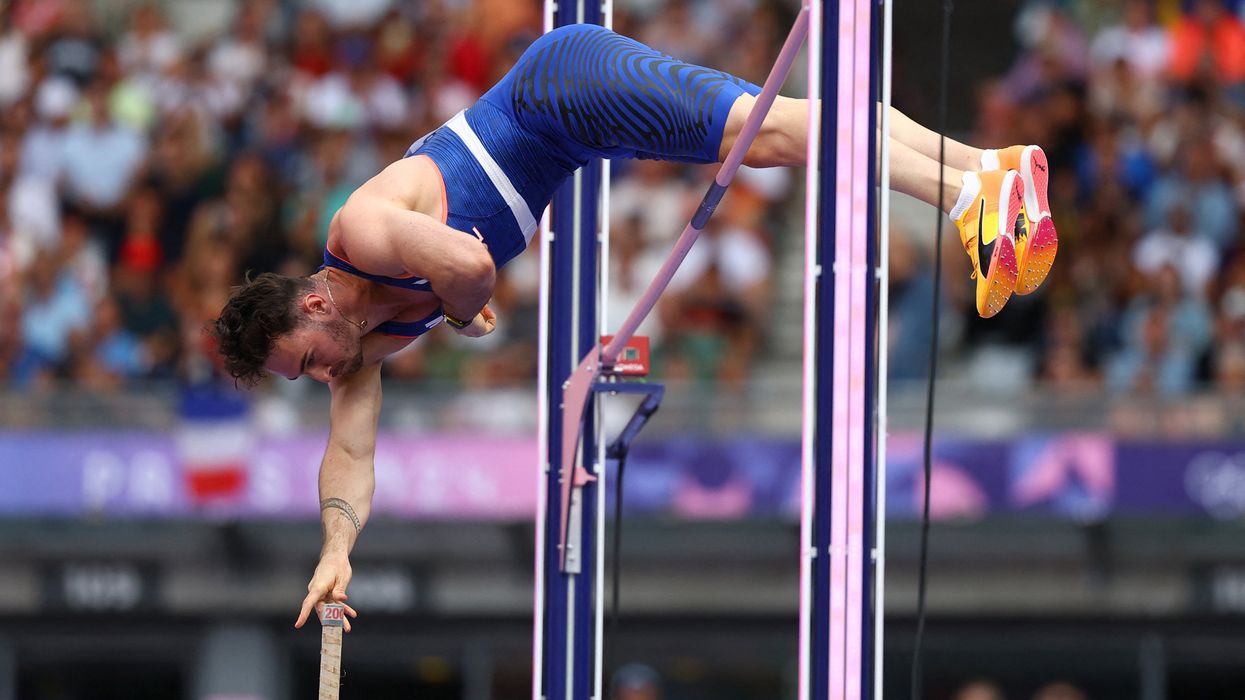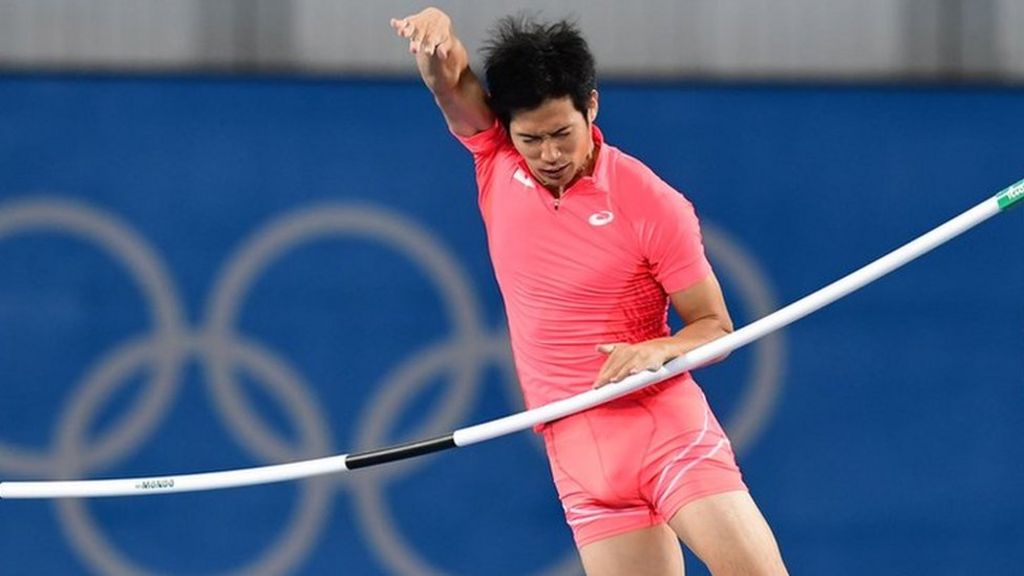Pole Vaulter Penis: A Fascinating Topic That Deserves Some Serious Attention
Let’s be real for a second. The topic of pole vaulter penis might seem unconventional, but it’s one of those niche discussions that combines athleticism, science, and even a touch of humor. If you’ve ever wondered how this unique aspect of sports physiology works—or if you’re just curious about the connection between athletic performance and anatomy—you’re in the right place. We’re diving deep into the world of pole vaulting and exploring the facts, myths, and everything in between.
Now, before we jump into the nitty-gritty details, let me just say that this isn’t your average article. We’re keeping things real, informative, and engaging. Think of it as a conversation over coffee with someone who knows their stuff but isn’t afraid to throw in a joke or two. So grab a snack, sit back, and let’s explore what makes pole vaulters so fascinating.
By the way, if you’re wondering why we’re even talking about this, it’s because the human body is an incredible machine, and athletes like pole vaulters push its limits in ways that most of us can only dream of. Understanding the science behind their performance—and yes, even the anatomical aspects—gives us a deeper appreciation for what they do. And who knows? You might learn something surprising along the way.
What Exactly Is Pole Vaulting? Let’s Break It Down
Before we dive into the specifics of pole vaulter penis, let’s first talk about what pole vaulting actually is. Picture this: a tall, lean athlete sprints down a runway, plants a long flexible pole into a box, and launches themselves into the air. Their goal? To clear a bar that’s often higher than most people’s ceilings. It’s not just about strength or speed—it’s a combination of physics, technique, and sheer determination.
Key Elements of Pole Vaulting
- Speed: Athletes need to generate enough momentum to propel themselves upward.
- Strength: Core and upper body strength are crucial for controlling the pole and executing the jump.
- Technique: Precision is key when it comes to planting the pole and transitioning from horizontal to vertical motion.
- Flexibility: Believe it or not, flexibility plays a big role in maximizing height and efficiency.
And while all these factors contribute to a successful vault, there’s one aspect that often gets overlooked: the physical demands on the athlete’s body. That’s where our main topic comes into play.
The Science Behind Pole Vaulter Penis
Alright, let’s get to the good stuff. When people hear the term "pole vaulter penis," they often assume it’s just a funny joke or urban legend. But there’s actually some solid science behind it. Research has shown that certain physical traits can give pole vaulters a natural advantage in their sport—and yes, anatomy plays a role.
Why Anatomy Matters in Athletics
Think about it: every sport requires a specific set of physical attributes. Sprinters need powerful legs, swimmers need strong shoulders, and gymnasts need incredible flexibility. Similarly, pole vaulters benefit from certain anatomical features that enhance their performance. These include:
- Proportional Limb Length: Longer legs and arms can help generate more force during the vault.
- Core Strength: A well-developed core improves balance and control mid-air.
- Genetic Variations: Some studies suggest that certain genetic traits, such as bone density and muscle composition, can give athletes an edge.
Now, here’s where things get interesting. Some researchers have hypothesized that certain anatomical traits, including variations in genital size, could influence an athlete’s ability to perform at their peak. Don’t worry—it’s not as weird as it sounds. Stick with me.
Debunking Myths About Pole Vaulters and Anatomy
Let’s address the elephant in the room: there are plenty of myths and misconceptions surrounding pole vaulters and their anatomy. Some people claim that having a larger "pole" gives athletes an advantage, while others think it’s purely a coincidence. So, what’s the truth?
The Role of Genetics in Athletic Performance
According to experts, genetics play a significant role in determining an athlete’s potential. However, it’s important to note that no single trait—whether it’s height, weight, or anatomy—guarantees success. Instead, it’s the combination of factors that makes someone truly exceptional. For example:
- Athletes with longer limbs may have a biomechanical advantage when it comes to generating force.
- Individuals with higher levels of testosterone (a hormone linked to muscle growth) often excel in strength-based sports.
- Even something as seemingly unrelated as foot size can impact an athlete’s performance.
So, while there might be a slight correlation between certain anatomical traits and athletic ability, it’s far from being the defining factor.
How Does This Relate to Pole Vaulters?
Now that we’ve covered the basics, let’s circle back to our original topic: pole vaulter penis. Is there any scientific evidence to support the idea that anatomical differences give these athletes an edge? The answer, as with most things, is more complex than you might think.
The Biomechanics of Pole Vaulting
Pole vaulting involves a series of complex movements that require precise coordination. From the initial sprint to the final clearance of the bar, every step of the process relies on the athlete’s body working in harmony. While anatomical variations might influence certain aspects of performance, they’re just one piece of the puzzle.
For instance, some researchers believe that individuals with certain anatomical traits—such as a longer pelvic region or increased hip flexibility—might find it easier to execute the twisting motion required during a vault. However, these advantages are relatively minor compared to the overall skill and training involved.
Real-Life Examples: Famous Pole Vaulters
To give you a better understanding of how all this applies in practice, let’s take a look at some famous pole vaulters throughout history. These athletes have pushed the boundaries of what’s possible in their sport, and their achievements serve as a testament to the power of dedication and hard work.
Biography of Sergey Bubka
Sergey Bubka, a Ukrainian pole vaulter, is widely regarded as one of the greatest athletes in the history of the sport. Over the course of his career, he set numerous world records and earned countless accolades. But what made him so successful?
| Name | Sergey Bubka |
|---|---|
| Country | Ukraine |
| Birthdate | December 4, 1963 |
| Height | 6'1" (185 cm) |
| Weight | 165 lbs (75 kg) |
Bubka’s success can be attributed to a combination of natural talent, rigorous training, and innovative techniques. While his anatomy certainly played a role, it was his relentless pursuit of excellence that truly set him apart.
Training and Preparation: The Unsung Heroes
It’s easy to focus on the physical attributes of pole vaulters, but the truth is that training and preparation are the real keys to success. These athletes spend countless hours honing their skills, perfecting their techniques, and pushing their bodies to the limit. And let’s not forget the mental aspect—staying focused under pressure is just as important as physical prowess.
The Importance of Mental Toughness
Mental toughness is often overlooked in discussions about athletic performance, but it’s crucial for pole vaulters. Imagine standing at the edge of the runway, knowing that one wrong move could cost you the competition—or worse, result in injury. That’s why top athletes invest time in mental conditioning, visualization, and stress management techniques.
So, the next time you hear someone talking about pole vaulter penis, remind them that it’s not just about anatomy—it’s about the whole package: physical, mental, and emotional preparation.
Conclusion: What Have We Learned?
As we wrap up this article, let’s recap the key points we’ve covered:
- Pole vaulting is a complex sport that combines speed, strength, and technique.
- Anatomy plays a role in athletic performance, but it’s not the only factor.
- Genetics, training, and mental toughness all contribute to an athlete’s success.
- Real-life examples like Sergey Bubka demonstrate the importance of dedication and hard work.
So, whether you’re a die-hard sports fan or just someone who enjoys learning about the human body, there’s no denying that pole vaulters are an incredible group of athletes. And while the topic of pole vaulter penis might seem quirky, it’s just one small piece of a much larger puzzle.
Now, here’s the call to action: if you found this article interesting, don’t hesitate to leave a comment or share it with your friends. Who knows? You might inspire someone else to explore the fascinating world of sports science. And if you’re hungry for more knowledge, check out our other articles on athletic performance, anatomy, and everything in between.
Table of Contents
- What Exactly Is Pole Vaulting?
- The Science Behind Pole Vaulter Penis
- Debunking Myths About Pole Vaulters and Anatomy
- How Does This Relate to Pole Vaulters?
- Real-Life Examples: Famous Pole Vaulters
- Training and Preparation: The Unsung Heroes
- Conclusion: What Have We Learned?

French Pole Vaulter’s Massive Penis Dashes Olympic Dreams

Pole vaulter, Anthony Ammirati's own penis denies him an Olympic medal

Olympic Pole Vaulter Knocked His Penis Response Hot Sex Picture